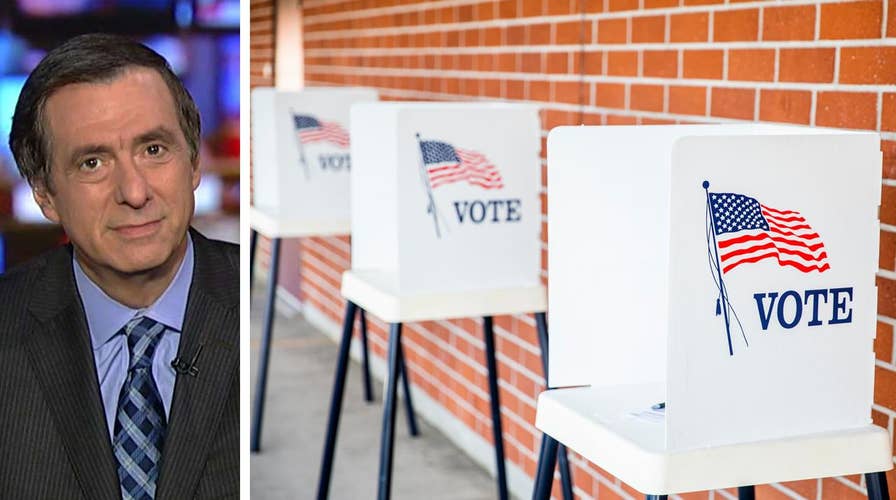Kurtz: Press predicting elections is risky business (see 2016)
'MediaBuzz' host Howard Kurtz weighs in on the dangers of the media predicting a Democratic takeover as pretty close to a done deal, with six days still to go until the election.
Their faces peered out from the pages of The New York Times a couple of days ago, the Democrats who would become committee chairmen if their party wins the House.
These mini-profiles were followed by a Times interview published yesterday with Nancy Pelosi, who laid out her agenda if she becomes speaker again.
CNN's Chris Cillizza followed up with this piece: "Nancy Pelosi Is Right. The Democrats Should Win the House on Tuesday."
Sure sounds like the media are viewing a Democratic takeover as pretty close to a done deal. It's being baked into the cake of political coverage.
At Nate Silver's 538 site, the projection is that the Dems have 85.5 percent chance of being able to give Pelosi the gavel.
Sound familiar?
Didn't we go through this in 2016, when almost everyone in journalism, citing endless polls, believed or predicted that we were headed for a second Clinton presidency?
I'm not here to talk up the Republicans' chances in the House. The atmosphere favors the Democrats, the grass-roots energy seems to be on their side, the president's party usually loses seats in the midterms, and Donald Trump, who has made this a referendum on himself, is polling around 40 percent.
But who really knows for sure? It's a midterm, with 435 House races. Turnout is a question mark. Local personalities and issues are a factor, although less so in this Trump-dominated race. Whether these contests will turn more on health care, immigration, the economy, Kavanaugh, the recent terror attacks, or visceral feelings about the 45th president is not entirely clear.
While the odds are against the Republicans, they probably have a better shot at holding the House than Trump appeared to have two years ago in the Electoral College.
And if the Democrats do gain control, will it be by winning barely more than the 23 seats they need, or by the 30 or 40 seats that would constitute a blue wave?
The GOP, meanwhile, is widely expected to hold the Senate, perhaps gain a seat or two, in large measure because of a highly favorable map -- although there are a number of tight races there too.
It's obviously reasonable for the press to look into what the Trump presidency would look like with the opposition party running the House. But it's not a lock.
The Times piece, based on an interview with Pelosi, says "Democrats would use their first month in the House majority to advance sweeping changes to future campaign and ethics laws, requiring the disclosure of shadowy political donors, outlawing the gerrymandering of congressional districts and restoring key enforcement provisions to the Voting Rights Act."
The California congresswoman says her party "would then turn to infrastructure investment and the climbing costs of prescription drugs, answering voter demands and challenging President Trump's willingness to work on shared policy priorities with a party he has vilified." The idea, she says, would be to show that the Dems "are a governing party, not the leftist mob that Mr. Trump describes."
The more likely outcome is gridlock if Congress is divided. And keep in mind that Pelosi would be under great pressure from the party's left wing to go more forcefully in a Medicare-for-all direction, not to mention a flood of investigations and subpoenas for the Trump administration.
The Times story does contain this caveat in the seventh paragraph:
"Democrats, of course, may fall short of a majority on Tuesday."
Of course.





